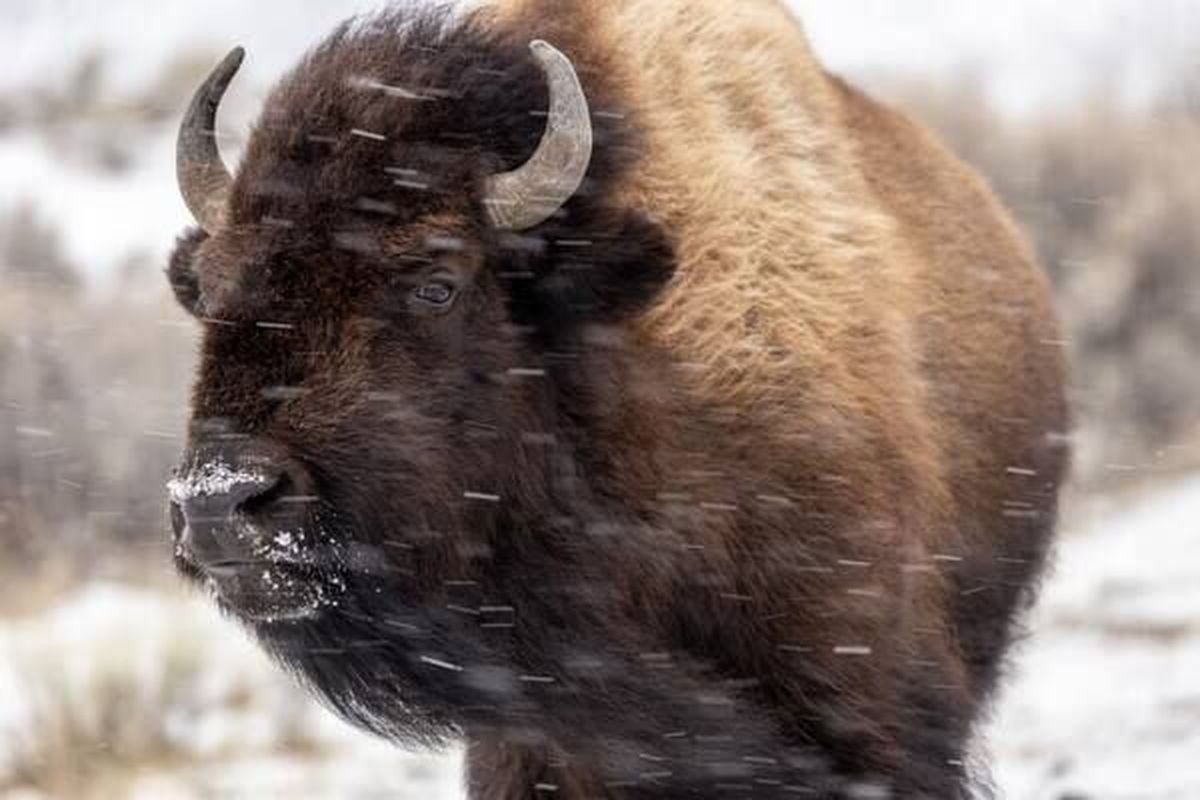On the hunt for Yellowstone’s bison

Deer and elk were no problem for Kashius Gleason. The 19-year-old member of the Yakama Nation had hunted plenty of them around his reservation in Washington.
Yet standing in freezing temperatures at the doorstep of Yellowstone at daybreak one February morning, he was nervous as a herd of bison trekked out of the park.
He had driven 16 hours with his family to get to this snowy basin, and didn’t want to miss.
“It was my first time shooting something different,” he said.
Every winter, Gleason’s family makes the journey from southern Washington to the northern border of Yellowstone in Montana to gain a semblance of something they had lost.
For centuries, bison sustained a way of life for Native Americans.
Tribes hunted the massive mammal not just for its meat but to use nearly every part of its body – its hide to fashion clothing, horns to make tools and even its bladder to carry water.
But in the 1800s, the U.S. government slaughtered the animals in an effort to wipe out tribes’ food supply and settle the West. Even the Army was called in to keep Indigenous hunters out of what became Yellowstone National Park.
The bison and the tribes nearly vanished forever.
Now Gleason’s people are among a handful of tribes hunting bison again.
By exercising hunting rights enumerated in an 1855 treaty, the Yakama are able to maintain an ancient cultural relationship with the animals.
But the hunters have returned to a vastly different landscape.
Today, with government officials seeking to control the hairy mammals’ migration, the hunt is constrained to a strip of land in Montana.
For Montana ranchers and landowners north of Yellowstone, the hunt is key to keeping bison numbers in check over fears the wild migrating animals may spread disease and compete with cattle for grass.
The tribal treaty hunt is one of the ways Yellowstone bison are culled.
But others say the effort to control their numbers is undoing a conservation success story that pulled the bison – today vaunted as America’s national mammal, on par with the bald eagle – from the brink of extinction.
Yellowstone’s ecosystem can sustain up to 11,000, advocates say, nearly double the roughly 6,000-strong population counted last year.
This year, hunters killed about 1,100 bison, a sharp uptick from recent seasons. Dozens more were sent to slaughter as they sought better pastures after a particularly harsh winter.
“That’s too many,” said Tom Woodbury of the Buffalo Field Campaign, an activist group that petitioned the U.S. Fish and Wildlife Service to protect the Yellowstone bison under the Endangered Species Act.
“That’s a product of the population being too low and demand from the tribes being too high,” he said.
But he added: “It’s not up to us to tell the tribes what their relationship with bison should be.”
The buffalo have been a source of food and cultural tradition for generations of Yakama.
Before the arrival of European colonizers, tribal members traveled to the Yellowstone area to hunt for bison, trade with other tribes and bring meat back home to their families. That history helped the tribe secure its modern hunting rights.
For Troy Watlamet, Gleason’s uncle who took his nephew to Montana for the hunt, protests against the bison harvest are just another sign of continued discrimination against Native Americans.
“It’s something we live with every day,” Watlamet said. “Racism is not gone.”
For generations, hunting has been how Watlamet’s family puts food on the table.
But over the past few years, there were few bison migrating out of Yellowstone for him to hunt.
Caught in the middle is the Biden administration, which wants to restore some of the 60 million bison that once roamed North America while maintaining tribes’ sacred, millennia-old hunt.
In March, Interior Secretary Deb Haaland, the nation’s first Native American Cabinet secretary, announced her department is putting $25 million toward helping tribes manage their own herds and other bison conservation work.
“The administration has a pretty good track record in terms of really making treaty and trust responsibility a priority,” said Wizipan Garriott, Interior’s principal deputy assistant secretary for Indian affairs.
A new interagency bison management working group established in March “provides an amazing opportunity for those tribes that have treaty and hunting rights to be a part of that decision-making process,” Garriott said.
The fresh funding is “a great start,” said Shana Drimal, senior wildlife conservation associate at the Greater Yellowstone Coalition, which wants to see buffalo roam more freely in and out of the park.
“There are still a lot of unknowns as far as how that money is going to be allocated,” she said.
On that chilly morning hunt in February, Gleason was able to calm his nerves.
He killed two bison. His party took 10 in total, working well into the evening quartering and trucking away the carcasses.
Later in a kitchen back in Washington, the family butchered, processed and packaged the meat.
For Gleason, the hunt was less about connecting with the past and more about supporting his family today.
“It feels good to provide,” he said. “It’s not store-bought. I went all the way to Montana to take care of it.”
And personally, he enjoyed the hunt’s spoils.
“It was probably one of the best burgers I’ve ever eaten,” he said.